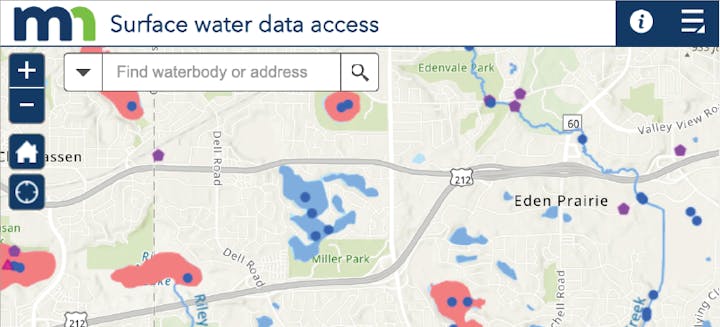Bluff Creek
Bluff Creek is about seven miles long. Unlike Purgatory and Riley creeks, it does not connect any lakes on its way to the Minnesota River. However, it does connect many wetlands, and you can explore almost its entire length on trails.
Keeping Bluff Creek healthy requires several tools and strategies. Conducting projects to stabilize streambanks and restore stretches of stream is one strategy. Cleaning and slowing rainwater runoff before it reaches the creek is another. Before either of these can be done, we need to understand how the creek is doing and where it needs the most help.
District staff have monitored Bluff Creek since the 1980s. To assess creek health, staff developed a tool called the Creek Restoration Action Strategy (CRAS). CRAS uses water quality data, as well as information on erosion and habitat, to rank which creek stretches (sections) are doing the best and which are doing the poorest.
Stream Characteristics
| Length | 6.8 miles |
|---|---|
| Elevation Change | 232 feet |
| Watershed size | 5.8 square miles |
| Number of cities | 2 |
| Number of lakes connected | 0 |
| Number of monitoring sites | 5 |
| Number of parks | 3 |
| Impairment listing | Turbidity, Fish |
| Common fish | Brook Stickleback, Northern Fathead Minnow |
| Invasive species | Reed Canary Grass, Buckthorn |
Stream Health
RPBCWD staff monitor streams at several sites. Bluff Creek has five monitoring sites. Data is collected at each of these sites to detemine if there's an impairment in the following categories:
- Total suspended solids
- Total phosphorus (nutrient)
- Macroinvertebrates (aquatic animals)
- Dissolved oxygen
- Fish species
- E. coli (bacteria)
For more information about waterbody impairments, visit the Minnesota's Impaired Waters List webpage managed by the Minnesota Pollution Control Agency.
Chloride: A Growing Concern
Chloride permenently pollutes our lakes, ponds, wetlands, and creeks. Chloride sources include winter de-icing salts, water softeners, and fertilizers all contribute to chloride pollution.
Visit the factsheets page to see the most recent stream water quality monitoring summaries.






